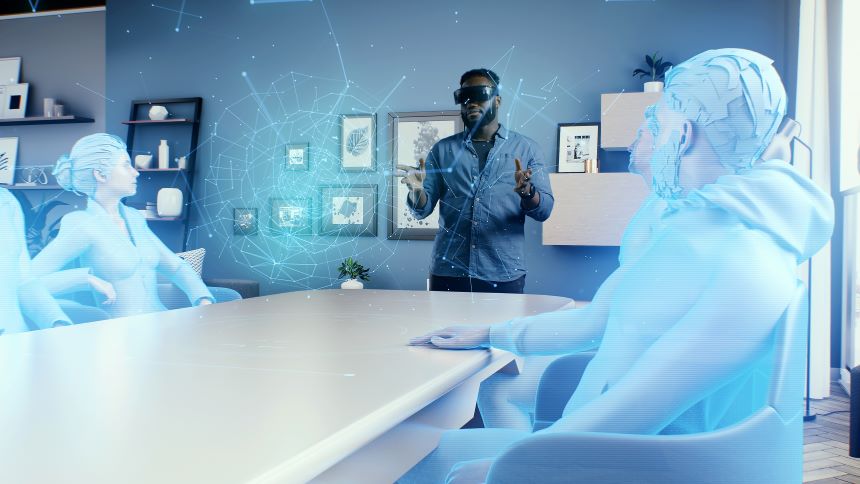
Traditional training with a focus on largely discrete and disparate events lacks the effectiveness required for true behavior change. This article outlines how a continuous learning process, on the other hand, improves the application of learning and leads to behavior change.
What is Continuous Learning?
Continuous learning is an ongoing process that involves acquiring new skills, reinforcing existing knowledge, and embracing personal and professional development. It encompasses a broad range of activities — both formal and informal — aimed at personal and professional development. This process can involve structured training, self-directed exploration, social learning, and the practical application of skills in various contexts. Continuous learning is not a one-time event but a lifelong journey, integral to adapting to new challenges and opportunities in an ever-evolving world.
Why is Continuous Learning Important for Organizations?
Continuous learning is crucial for organizations as it fosters an environment of growth, innovation, and adaptability. In today’s fast-paced and constantly changing business landscape, the ability of an organization to stay competitive hinges on its workforce’s skills and knowledge. Continuous learning:
Continuous learning is pivotal for organizations as it cultivates a culture of growth, innovation, and adaptability. In the rapidly evolving business environment, maintaining competitiveness relies heavily on the workforce’s ongoing skill development. Continuous learning:
- Drives Innovation: Equips employees with current skills and knowledge, fostering the generation of innovative ideas and solutions.
- Enhances Adaptability: Enables organizations to quickly adjust to market shifts, technological advancements, and emerging trends.
- Increases Employee Engagement: Employees feel valued and recognize growth opportunities, boosting their engagement and job satisfaction.
- Reduces Turnover Costs: Investing in existing employees enhances their commitment and loyalty, reducing the need for frequent new hires.
- Keeps Pace with Technological Changes: Ensures the workforce is proficient in contemporary tools and technologies.
- Attracts and Retains Top Talent: Demonstrates a commitment to employee growth, making the organization attractive to high-quality candidates.
- Improves Productivity: Engaged and well-trained employees exhibit higher productivity and better job performance.
- Mitigates Risk of Skill Obsolescence: Regular learning updates prevent employee skills from becoming outdated.
- Cost-Effective Strategy: More economical than constantly recruiting new talent to fill skill gaps.
Importance of Continuous Learning in the Workplace
Delve into the essential role of continuous learning in the workplace, benefiting both employees and employers. For employees, it offers:
- Career Development: Continuous learning opens up pathways for career advancement and skill diversification, making employees more versatile and valuable.
- Job Satisfaction: Learning new skills and improving existing ones can increase job satisfaction and motivation, leading to higher productivity.
- Marketability: Staying updated with industry trends and skills keeps employees marketable and prepared for future career opportunities.
For employers, continuous learning:
- Cultivates a skilled workforce capable of meeting current and future challenges.
- Drives organizational growth through innovation and improved performance.
- Helps in attracting and retaining top talent, as a culture of learning is often a key consideration for job seekers.
Benefits of Continuous Learning
For Learners:
- Skill Enhancement: Continuous learning enables individuals to acquire new skills and improve existing ones, keeping them relevant and competitive in the job market.
- Career Advancement: By continuously learning, individuals can open doors to new career opportunities and advancements within their current roles.
- Personal Growth: It promotes personal development, leading to increased confidence, creativity, and problem-solving abilities.
For Learning and Development (L&D) Teams:
- Effective Training Programs: Continuous learning helps L&D teams design more relevant and impactful training programs that cater to the evolving needs of the workforce.
- Increased Engagement: By offering varied and dynamic learning opportunities, L&D teams can boost learner engagement and participation.
- Measurement of Impact: Continuous learning facilitates better tracking and measurement of the impact of training programs on employee performance and development.
For the Business:
- Innovation and Competitiveness: A workforce engaged in continuous learning is more likely to innovate, keeping the business competitive.
- Adaptability to Change: Continuous learning equips businesses to quickly adapt to market changes and technological advancements.
- Employee Retention: Businesses that invest in continuous learning are more likely to retain top talent, as employees value opportunities for growth and development.
- Enhanced Performance: A continuously learning workforce is better equipped to meet business goals, leading to overall improved organizational performance.
Why Should You Shift from Discrete and Disparate Training Events to Continuous Learning?
In traditional training, learners attend training sessions – either synchronous or asynchronous – sometimes with groups of peers or on their own. The events take place outside the work environment and lack the opportunity for application and don’t lead to true behavior change.
Traditional training events are still important and can serve as impact events from which to measure strategic informational and motivational guides. But recognizing the limitations of those events is important so that interspersed between them are opportunities for employees to digest and apply new information.
Continuous learning programs fill the gaps between traditional training events by giving learners time to think, act, and evaluate.
Hence, a more effective model is one in which learning is a continuous process for employees.
- This model recognizes that learning is a journey that occurs over time and through opportunities for application, evaluation, and conscious iteration.
- Additionally, learners need the time, opportunity, and space to evaluate new knowledge and determine the best way it applies to their situation.
- Consider a leadership training program, one in which the company CEO may discuss a corporate value such as innovation.
- The CEO can explain the importance of innovation and how she sees it working in the organization.
- After that discrete event, a continuous learning program that includes nudges to articles, discussions, and shared experiences can turn a one-hour session about innovation to something that truly changes the behavior and culture of an organization.
What Are the Key Considerations to Successfully Shift to a Continuous Learning Process?
Explore the key considerations for successfully transitioning from individual training events to a continuous learning process in your organization:
- Attitude is powerful: Helping employees, especially those in management, understand the value of a continuous learning process and their role in it will shift behaviors and habits.
- Work with a bigger picture: In her book “Mindset,” Carol Dweck explains “the power of yet versus the tyranny of now.” When employees understand that learning is a journey, they can look forward to an end goal that may take time and effort to pursue. The alternative is a situation in which employees and managers become increasingly frustrated with disconnected training events, immediately after which change is impossible to measure.
- Each failure is an opportunity to learn, and learning doesn’t occur without failure: Employees need time to experiment with what they’ve learned. It’s vital that they receive feedback and coaching so they can improve as they experiment.
- Frictionless learning: Performance support materials need to be accessible anytime and virtually anywhere. The ease of access to information in the flow of work is the deciding factor in whether employees will search for and apply new knowledge. If information is buried behind thick access portals, deep within long documents or somewhere in long videos, they’ll not have the time or patience to find or use it.
- Social and collaborative learning: This makes it possible for employees to improve on new concepts and how they apply them on the job.
What Strategies Can Help You in Converting Event-based Training to an Ecosystem of Continuous Learning?
There are several strategies to consider when converting event-based training programs to continuous learning:
- Leaders must first model desired behavior. Those in the C-suite should use the training resources available and share what they learn, admitting to failures and explaining how they overcame them.
- Map learning programs to learning journeys. Be aware that a learning journey needs to start with awareness, motivation, participation, and experimentation.
- Digitize learning content to performance support tools so that it’s easy to find in the flow of work.
- Use social learning so that employees can collaborate with others in their situation. Within those cohorts, employees can share knowledge and even generate additional content.
- Promote self-directed learning. This is advantageous because employees can find the meaning and mastery of their content domains. To do this, corporate training teams can provide:
-
- Resources, such as access to LinkedIn Learning, Harvard Business Review, or more trade-specific journals and learning organizations.
- Direction on how to use available resources.
- Formal training sessions on how to learn, how to apply what’s been learned, and how to search additional learning opportunities.
- Funding for things like conferences, books, and even advanced degrees.
- Time set aside for learning. The investment of a few hours a week for employees as they learn and experiment carries a huge return.
- Meet people where they are – on their mobile devices. Learners are entering the workforce naturally using mobile devices for learning and social interaction. Leverage that by providing content that:
-
- Primes learners. Inform them what they need to learn, why it’s important, and what they’ll get out of it.
- Promotes foundational concepts important to understand before formal training events, level setting the participants’ core knowledge base.
- Reinforces formal training events with reminders and even gamified learning content.
- Presents practice labs, scenarios, and application opportunities.
- Feeds into a loop for coaching and mentoring by SMEs.
- Performance Support Tools: Implement user-friendly tools that provide immediate, on-demand access to learning resources at the point of need. These can include digital job aids, quick reference guides, checklists, and interactive knowledge bases integrated into the work environment. By making support available right at the moment of performing a task, these tools help in reinforcing learning, improving task execution, and reducing error rates. Effective performance support tools are context-sensitive, offering specific information tailored to the task at hand, thus enhancing the efficiency and productivity of the workforce.
- Content Curation: Actively curate and organize relevant learning materials from various sources, including industry publications, academic research, expert blogs, and more. This approach not only saves time for learners in finding quality content but also ensures that the learning material remains current, diverse, and aligned with industry trends.
- Social and Collaborative Learning: Discover the creation of platforms and opportunities for employees to engage in group learning activities, such as discussion forums, collaborative projects, and peer-review sessions. Encourage knowledge sharing through social networks and communities of practice within the organization. This strategy not only enhances learning outcomes but also builds a strong community of learners who support and learn from each other’s experiences and perspectives.
Parting Thoughts
In conclusion, a continuous learning process significantly improves the likelihood of employees applying new information and effecting behavioral change. It overcomes the obstacles that traditional training always runs into – discrete and disparate events after which employees quickly forget or ignore new information and knowledge.



